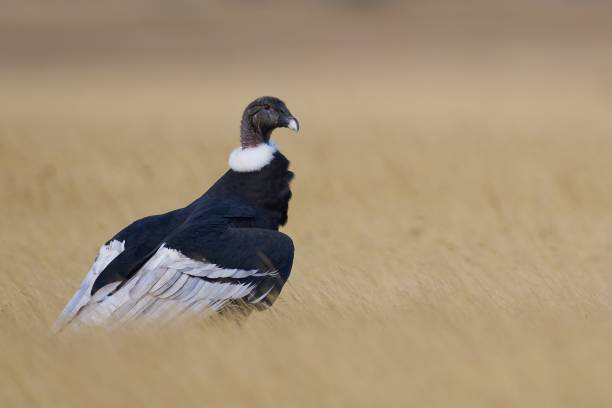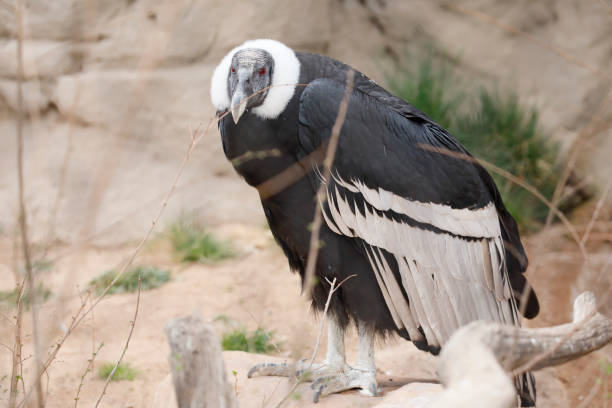Table of Contents
Scientific Classification
| Kingdom | Animalia |
| Phylum | Chordata |
| Class | Aves |
| Order | Cathartiformes |
| Family | Cathartidae |
| Genus | Vultur |
| Species | Vultur gryphus |
| Scientific Name | Vultur gryphus |
Description
The Andean condor is among the largest flying birds on the planet, boasting a wingspan that can reach over 10 feet (3 meters). Males typically weigh between 24-33 pounds (11-15 kg), while females are a bit smaller. Males are distinguished by a unique fleshy comb on their heads, and both sexes feature a ruff of white feathers around their necks.
This species is known for its graceful gliding ability, soaring for hours without the need to flap its wings. It utilizes thermal air currents to maintain altitude. Despite their size, Andean condors are quite agile and play an essential role as scavengers in their ecosystems.
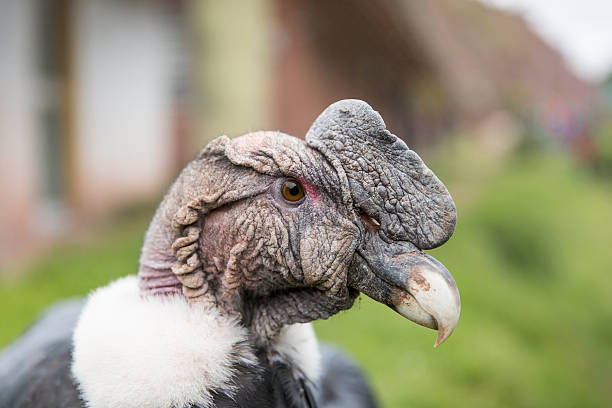
Distribution
The Andean condor is native to South America, primarily inhabiting the Andes mountain range. Its range stretches from Venezuela and Colombia in the north down to Argentina and Chile in the south. These birds are typically found in open areas where strong air currents are present, enabling them to soar effortlessly while they search for food.
Habitat
These birds prefer open grasslands, elevated plateaus, and coastal cliffs, which provide them with a vantage point to spot carrion from a distance. They typically inhabit areas at altitudes of up to 16,000 feet (4,900 meters), but they will descend to lower regions in search of food. Andean condors require tall cliffs for roosting and nesting, as these locations offer protection from potential threats.
Diet
The Andean condor is a scavenger that mainly feeds on carrion. It has a preference for large carcasses, such as those of deer, llamas, cattle, and guanacos. Unlike some vultures, the condor typically waits for smaller vultures or predators to open a carcass before it begins to eat. While other birds may tear through tough hides, the condor opts for this more patient approach.
With their keen eyesight, they can spot food from great heights and are capable of traveling long distances in search of a meal. Despite their large size, they are gentle feeders, often waiting patiently for their turn at a carcass.
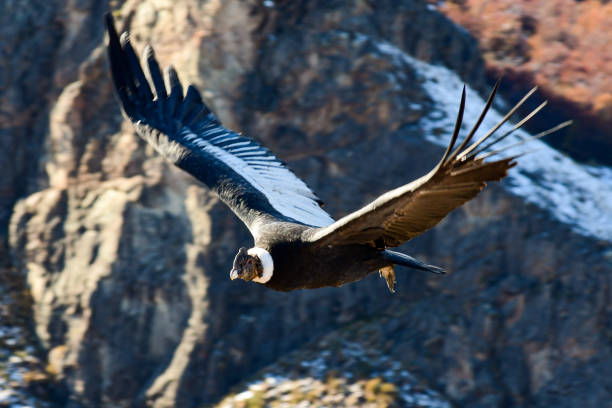
Behavior
Andean condors are highly social creatures. You can frequently spot them in small groups while they roost or feed. Being diurnal, they are active during the day. They often glide on thermal currents, and their flight is both powerful and efficient, allowing them to cover vast distances with minimal energy expenditure.
To communicate, they rely on body language and vocalizations. Their calls primarily include hissing and grunting. Their social interactions, particularly during feeding, demonstrate a clear dominance hierarchy to establish a pecking order.
Lifespan
Andean condors can live a very long time. Some can reach an age of up to 70 years in captivity. In the wild, their average lifespan is around 50 years. They live long because of several reasons. These include a low rate of being hunted and few natural dangers.
Reproduction and Lifecycle
The Andean condor has a slow reproductive cycle. Pairs lay just one egg every two years. They form strong, long-term bonds, with mating pairs staying together for life. Courtship involves elaborate displays, including wing-spreading and vocalizations.
Nests are typically built on remote, high cliffs, where the female lays a single egg. Both parents share incubation duties, which last about 54-58 days. After it hatches, the chick needs its parents for more than a year. It takes its first flight at about six months old. However, it still depends on its parents for food until it is fully independent.
Predators
Adult Andean condors are so large and powerful that they have no natural predators. Eggs and young chicks can attract opportunistic predators. These include foxes, eagles, and even humans.
The biggest threat to their survival is human activities. These include habitat destruction, poisoning from contaminated carcasses, and illegal hunting.
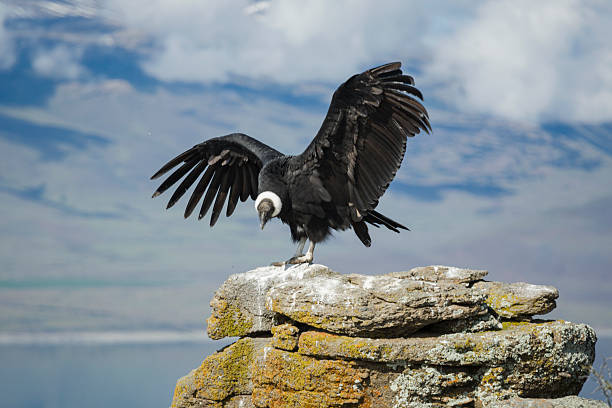
Adaptations
The Andean condor has evolved several adaptations that make it a master of the skies:
Large Wingspan: Enables efficient soaring with minimal effort.
Keen Eyesight: Helps spot food from great distances.
Bald Head: Prevents bacterial buildup when feeding on carrion.
Strong Beak: Allows them to tear flesh efficiently.
Social Feeding Behavior: Ensures they get access to food sources in competitive environments.
These adaptations make them one of the most specialized scavengers in their ecosystem.
Conservation Status
The International Union for Conservation of Nature (IUCN) now lists the Andean condor as Vulnerable. Their population has fallen due to habitat loss, poisoned carcasses, and poaching.
Many conservation programmes aim to protect them. These include captive breeding and reintroduction efforts. Several South American countries have named them a national symbol. This has boosted awareness and efforts to protect their populations.
Conclusion
The Andean condor is not just a bird; it is a symbol of power, endurance, and the delicate balance of nature. As one of the largest birds that can fly, it helps keep ecosystems healthy by cleaning up dead animals. Saving this amazing species is crucial for biodiversity. Conservation efforts today can help future generations see the Andean condor soar in the sky.
